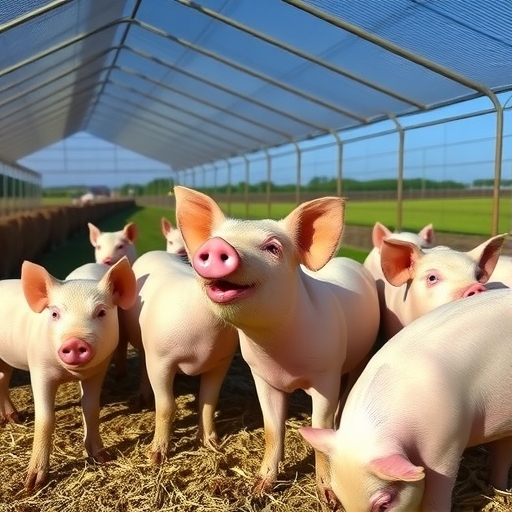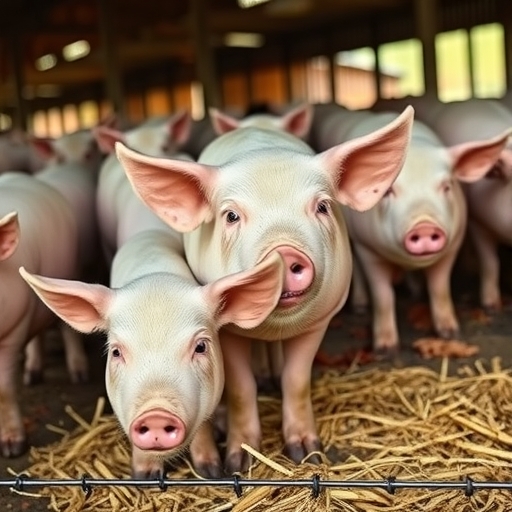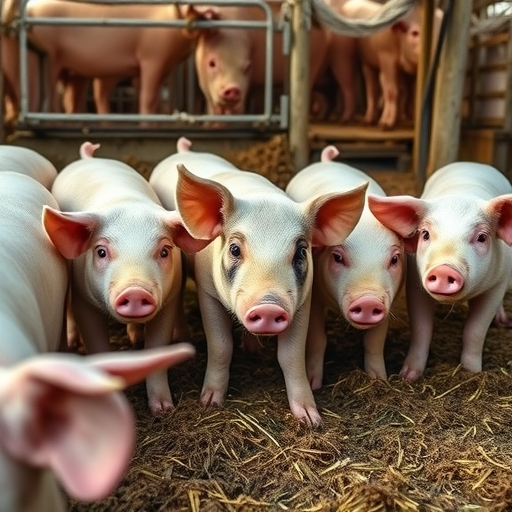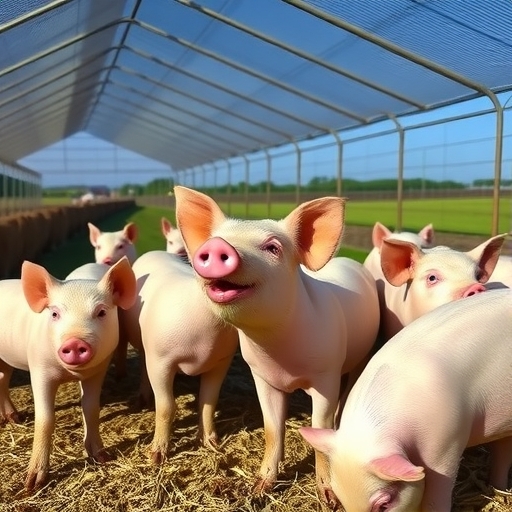Understanding Lean Hog Futures: A Comprehensive Guide to Trading the Pork Market
Have you ever wondered how the price of the bacon on your breakfast plate is determined, or how farmers manage the financial risks associated with raising livestock? The answer often lies in the complex world of **Lean Hog Futures**. These financial instruments, traded on the Chicago Mercantile Exchange (CME), play a crucial role in the global **pork market**, offering both producers and investors a way to manage price volatility and speculate on future values. In this comprehensive guide, we’ll peel back the layers of Lean Hog Futures, exploring their fundamental structure, the powerful forces that drive their prices, key market benchmarks, and essential strategies for navigating this dynamic commodity market. We’ll break down complex ideas into simple terms, helping you grasp the essentials of this fascinating corner of agricultural finance.
Our journey will take us through the historical evolution of these contracts, from their origins in physical delivery to their modern cash-settled format. We will examine the critical **supply and demand** factors, global economic influences, and even the seasonal rhythms that impact hog prices. You’ll learn about the important **CME Lean Hog Index** and **CME Pork Cutout Index**, which are vital for understanding the value chain from farm to fork. Finally, we’ll equip you with insights into **trading strategies** and **risk management** techniques crucial for anyone looking to engage with this vibrant market, all while maintaining an educational and objective perspective.
The Anatomy of Lean Hog Futures: Contracts and Evolution
At its core, a **Lean Hog Futures** contract is an agreement to buy or sell a specified quantity of lean hogs at a predetermined price on a future date. These contracts are standardized by the **CME Group** and are primarily used for two main purposes: **speculation** on future pork prices or **hedging** against adverse price movements in the cash market. When we talk about “lean hogs,” we’re referring to pigs weighing approximately 250 pounds, which is typically the minimum weight required for slaughter and usually reached in about six months from birth. This standardization ensures that all market participants are trading the exact same commodity. 
Each individual Lean Hog Futures contract represents **40,000 pounds** of lean hogs and is priced in U.S. cents per pound. For example, a price quoted at 80 cents per pound means the contract’s total value would be $32,000 (40,000 lbs * $0.80/lb). The minimum price fluctuation, or “tick,” is 1/4 of a cent per pound, which translates to a $10 move per contract. Understanding these specifications is crucial before you consider engaging in **futures trading**. Historically, these contracts were introduced on the CME floor in 1966. They initially involved physical delivery, meaning actual hogs would change hands. However, the market evolved significantly, transitioning to **cash settlement** from February 1997 onwards. This change, based on the **USDA’s** national daily price reports for slaughtered swine, dramatically increased liquidity and made it easier for financial participants to engage without dealing with logistics. Today, trading terminates on the 10th business day of the contract month, with final settlement based on the two-day **CME Lean Hog Index**.
For quick reference, here’s a summary of the standard Lean Hog Futures contract specifications:
| Specification | Detail |
|---|---|
| Contract Size | 40,000 pounds of lean hogs |
| Price Quotation | U.S. Cents per pound |
| Minimum Price Fluctuation (Tick) | 0.0025 cents per pound ($10.00 per contract) |
| Trading Hours | Sunday 5:00 p.m. – Friday 1:55 p.m. CT with a daily 45-minute break beginning at 1:55 p.m. CT |
| Settlement Method | Cash-settled, based on CME Lean Hog Index |
This transition to cash settlement was a pivotal moment for the market, offering several key advantages for participants:
- It eliminated the logistical complexities and costs associated with physically delivering live hogs, making the market more accessible.
- It significantly increased market liquidity by attracting a wider range of financial participants, not just those involved in physical hog operations.
- It provided a more accurate and transparent pricing mechanism, as settlement is based on a widely accepted USDA index of cash prices.
These benefits collectively enhanced the efficiency and attractiveness of Lean Hog Futures as a hedging and speculative tool.
Decoding Market Drivers: Supply, Demand, and Seasonality in the Pork Industry
The **Lean Hog Futures** market is a dynamic environment, constantly influenced by a myriad of factors related to **supply and demand**. Understanding these drivers is key to anticipating price movements. The **United States** holds a significant position as the world’s largest pork exporter, with substantial production concentrated in Midwestern states such as Illinois, Iowa, Minnesota, and North Dakota. This means domestic production levels and export capabilities heavily sway global pork prices and, consequently, lean hog futures. 
Let’s consider the key influences that shape **lean hog prices**:
- Hog Production Cycle: Pigs typically reach their optimal slaughter weight of 250 pounds in about six months. This cycle dictates the natural flow of supply. When we talk about yield, approximately 85-90 pounds of lean meat can be derived from a 250-pound hog, with popular cuts like ham and loin making up around 40% of that yield.
- Seasonality: Like many agricultural commodities, lean hog futures exhibit strong **seasonal patterns**. Prices tend to **peak in summer** months, driven by increased demand for grilling during warmer weather. Conversely, prices often **decline in fall** (particularly October and November), coinciding with the corn harvest, which signals abundant feed and potentially increased slaughtering.
- Feed Costs: Perhaps one of the most critical factors is the price of feed. The **corn market**, along with soybeans, heavily influences hog production costs. When corn prices rise, it becomes more expensive for farmers to feed their hogs. This can lead to earlier slaughter at lower weights to cut costs, which paradoxically can drive hog prices up as the supply of heavier hogs diminishes.

- Global Demand: We cannot overlook the impact of global consumption. Rising incomes, especially in rapidly developing economies, significantly increase the demand for lean hogs and U.S. pork exports. **China**, for instance, stands as the leading pork consumer globally, and its demand often sets the tone for international pork markets.
- Information Sources: Savvy traders and producers closely monitor reports from the **USDA (U.S. Department of Agriculture)**. The quarterly “Hogs and Pigs Report” provides crucial insights into inventory and breeding intentions, while the monthly “Hog Slaughter Report” offers data on actual slaughter volumes, both of which are vital for gauging future **supply and demand** dynamics.
- Economic Disruptions: Unforeseen events can cause significant market upheaval. For example, the **Covid-19 Pandemic** led to major supply chain disruptions, impacting processing capacity and creating abnormal price spreads between live hogs and processed pork, demonstrating the market’s vulnerability to external shocks.
Understanding these intertwined factors provides a robust framework for comprehending the inherent **market volatility** and opportunities within **Lean Hog Futures trading**.
To further illustrate the key market drivers, consider this overview:
| Market Driver | Impact on Lean Hog Prices |
|---|---|
| Hog Production Cycle | Determines natural supply flow; longer cycles mean lagged supply response. |
| Seasonality | Summer demand often pushes prices higher; fall harvest can lead to lower prices due to feed abundance. |
| Feed Costs (Corn/Soybeans) | Higher feed costs increase production expenses, potentially leading to reduced supply and higher hog prices. |
| Global Demand (e.g., China) | Increased international consumption, especially from major importers, can significantly boost prices. |
| USDA Reports | Provide critical data on inventory, breeding, and slaughter, guiding future supply expectations. |
| Economic Disruptions | Supply chain issues, disease outbreaks, or trade policies can cause abrupt price swings. |
CME Indices and Spreads: Benchmarking Pork Value
To accurately track and settle **Lean Hog Futures** contracts, the **CME Group** provides essential benchmarks. These indices offer transparency and a standardized reference point for the entire **pork market**. The most important of these is the **CME Lean Hog Index**, which is a two-day weighted average of cash market hog prices. This index is derived from the **USDA’s National Daily Direct Hog Prior Day Report – Slaughtered Swine (LM_HG201)**, ensuring it accurately reflects actual market conditions. It’s the cornerstone for the final financial settlement of Lean Hog Futures contracts, meaning traders don’t exchange physical hogs but rather the cash difference between their contract price and this index value.
The CME Lean Hog Index is crucial for several reasons, providing a reliable reference for:
- **Fair Settlement:** It ensures that futures contracts are settled against a representative cash market price, preventing manipulation and promoting market integrity.
- **Price Discovery:** By reflecting actual cash market prices, the index contributes to transparent price discovery for live hogs.
- **Hedging Effectiveness:** Producers and processors can use the index as a basis for their hedging strategies, confident that their futures positions will align with the underlying cash market.
This index acts as a vital bridge between the physical hog market and the financial futures market.
Beyond live hogs, the value of processed pork is also critically important. This is where **CME Pork Cutout Futures** and the underlying **CME Pork Cutout Index** come into play. The Pork Cutout Index reflects the aggregated value of wholesale pork cuts, including loin, butt, picnic, rib, ham, and belly. These are the components that ultimately reach consumers as various pork products. The Pork Cutout Futures are cash-settled contracts based on this index, allowing participants to manage risk and speculate on the value of processed pork.
Here’s a quick comparison of the two essential CME indices:
| Index Name | Underlying Asset | Purpose | Data Source |
|---|---|---|---|
| CME Lean Hog Index | Live, slaughter-ready lean hogs | Cash settlement for Lean Hog Futures | USDA National Daily Direct Hog Report (LM_HG201) |
| CME Pork Cutout Index | Wholesale value of primal pork cuts | Cash settlement for Pork Cutout Futures | USDA National Daily Pork Report (LM_PK602) |
A fascinating aspect of the **pork market** is the **Pork Cutout-Lean Hog Spread**. This spread represents the price difference between the value of processed pork (the cutout) and the live, unprocessed hog. It’s a key indicator of **supply and demand** dynamics within the processing sector and broader consumer demand. When this spread is wide, it suggests that processors are finding strong demand for pork cuts relative to the cost of purchasing live hogs, indicating potential profitability. We often observe seasonal variations in this spread:
- The spread is typically **highest in November/December**, driven by strong holiday demand for cuts like ham, even as hog supply might be abundant due to farrowing cycles.
- Conversely, it tends to be **lowest in summer**, when overall demand for certain cuts might level off.
For example, during the **Covid-19 Pandemic in May 2020**, the spread widened dramatically due to processing plant closures, leading to an oversupply of live hogs at farms but limited capacity to turn them into valuable pork cuts. The **CME Group** plays a vital role beyond just lean hogs, offering a wide array of benchmark futures and options products across various asset classes, including other livestock (like Live Cattle and Feeder Cattle), grains, dairy, and soft commodities, underpinning the entire agricultural market’s risk management and price discovery.
Navigating the Market: Strategies for Trading and Risk Management
Engaging with **Lean Hog Futures** offers various avenues for market participants, whether you’re a farmer looking to protect your profits or an investor seeking opportunities. Let’s explore some key strategies and essential **risk management** techniques:
Trading Strategies:
- Hedging: This is a primary use case for agricultural producers. A hog farmer might sell Lean Hog Futures contracts to lock in a price for their future production, protecting themselves from a potential drop in cash market prices. Conversely, a pork processor might buy futures to secure a maximum purchase price for hogs needed in the future. Futures and **options on futures** are indispensable tools for hedging against adverse price movements.
- Speculation: For traders without physical hogs, futures contracts provide a way to **speculate** on future price movements. If you believe **lean hog prices** will rise, you can buy a futures contract (go “long”). If you anticipate a decline, you can sell a contract (go “short”). The goal is to profit from the price difference between your entry and exit points without ever taking physical delivery of any hogs.
- Options on Futures: These instruments offer flexibility. A call option gives you the right, but not the obligation, to buy an underlying futures contract at a specific price (the strike price) before a certain date. This can secure a maximum purchase price. A put option, conversely, grants the right to sell, establishing a minimum selling price. Options can be a less capital-intensive way to gain exposure or hedge, providing defined risk.
- CFDs (Contracts for Difference): Some platforms offer CFDs on lean hog prices, allowing you to speculate on price movements without owning the underlying commodity directly. This can be simpler for some traders but carries its own risks.
Analysis and Resources:
Successful **futures trading** often combines two powerful analytical approaches:
- Technical Analysis: This involves studying historical price charts, trading volumes, and various indicators to identify trends, patterns, and potential entry/exit points. For example, a trader might look for support and resistance levels or momentum indicators in **lean hog futures** charts.
- Fundamental Analysis: This approach focuses on the underlying **supply and demand** factors we discussed earlier. Traders using fundamental analysis will closely monitor **USDA reports** (like the “Hogs and Pigs Report”), weather patterns, feed costs (corn and soybeans), global trade data, and economic indicators, particularly from major pork-consuming nations like **China**. They also often seek insights from agricultural experts and futures specialists.
Platforms like **thinkorswim** offer advanced charting tools, real-time data, and educational materials that can be invaluable for conducting both types of analysis and executing trades efficiently.
Risk Management Techniques:
Given the inherent **market volatility** in agricultural commodities, robust **risk management** is paramount. We strongly recommend these practices:
- Setting Stop-Loss Orders: This is a crucial tool to limit potential losses. A stop-loss order automatically closes your position if the market moves against you by a predefined amount, helping to protect your capital.
- Determining Appropriate Position Sizes: Never allocate too much of your trading capital to a single trade. Calculate a position size that aligns with your risk tolerance, ensuring that a single losing trade doesn’t significantly impair your overall capital.
- Using a Risk-Reward Ratio: Before entering any trade, evaluate the potential profit against the potential loss. A favorable risk-reward ratio (e.g., aiming for $2 of profit for every $1 of risk) is a hallmark of disciplined trading.
Remember, while leverage in futures allows for potentially higher returns with less initial capital, it also magnifies potential losses. Therefore, understanding and implementing strict risk controls is not just advisable, but essential.
Common Risks and Overcoming Challenges in Lean Hog Trading
While **Lean Hog Futures trading** presents numerous opportunities, it also comes with its share of inherent risks and challenges. Understanding these pitfalls is the first step toward effectively mitigating them and ensuring a more stable trading journey. As we’ve discussed, the agricultural sector is particularly susceptible to external forces that can quickly alter **supply and demand** dynamics and consequently, **market prices**. 
Here are some of the primary risks you should be aware of:
- Supply Chain Disruptions: The journey from farm to market is complex and vulnerable. Events like severe weather conditions (droughts affecting feed, floods affecting logistics) or widespread disease outbreaks (such as African Swine Fever, which has impacted global hog populations significantly) can drastically reduce the supply of hogs or disrupt processing and transportation. Such disruptions can lead to sharp and unpredictable **price volatility** in the **pork market**, making it difficult to predict trends and manage open positions. We saw this vividly during the **Covid-19 Pandemic**, where processing plant closures created bottlenecks and skewed prices.
- Market Volatility: The **lean hog market** is known for its inherent price fluctuations. Numerous influencing factors, from daily weather reports to global economic shifts and geopolitical events, can cause rapid and significant price swings. This volatility, while offering potential for quick gains, also carries an elevated risk of quick losses, especially for those who are unprepared or over-leveraged.
- Leverage: Futures trading operates on a margin system, meaning you control a large contract value with a relatively small amount of initial capital. This **leverage** is a double-edged sword: it can amplify your profits, but it can also magnify your losses, potentially exceeding your initial deposit. It is crucial to understand that while a small margin requirement might seem appealing, it necessitates a disciplined approach to **risk management** and position sizing. Never trade with money you cannot afford to lose.
Overcoming these challenges requires a continuous commitment to education, diligent fundamental and technical analysis, and the unwavering application of robust **risk management** strategies. By staying informed about market-moving news, utilizing stop-loss orders, and maintaining appropriate position sizes, traders can navigate these complexities more confidently. Connecting with experienced agricultural experts and futures specialists can also provide invaluable insights and guidance, helping you to make more informed decisions in this intricate market.
To effectively navigate the inherent challenges, traders should consistently focus on:
- **Continuous Education:** Staying updated on market dynamics, global agricultural news, and economic indicators specific to the pork industry.
- **Disciplined Risk Management:** Strictly adhering to stop-loss orders, carefully sizing positions, and never risking more capital than one can afford to lose.
- **Diversification:** Considering other uncorrelated assets or strategies if possible, though this article focuses specifically on lean hog futures.
A proactive and informed approach is key to long-term success in this dynamic market.
Conclusion
Mastering **Lean Hog Futures trading** is a journey that demands a nuanced understanding of market fundamentals, a keen eye on global economic factors, and the diligent application of **risk management** principles. We’ve explored how these **CME-traded contracts** function, the profound impact of **supply and demand**, **feed costs**, and **seasonality** on **pork market prices**. We also delved into the crucial roles of the **CME Lean Hog Index** and **CME Pork Cutout Index** as benchmarks for value and settlement, highlighting how the **Pork Cutout-Lean Hog Spread** offers unique insights into the processing sector.
By leveraging the insights gained from **USDA reports**, combining **technical and fundamental analysis**, and employing strategies like **hedging** and options, traders can approach this market with greater confidence. Remember that successful engagement in this vital commodity market hinges on continuous learning, informed decision-making, and an unwavering commitment to protecting your capital. The **lean hog market**, despite its inherent **volatility** and challenges, offers strategic opportunities for those who are well-prepared and disciplined.
Disclaimer: This article is for informational and educational purposes only and should not be considered as direct financial advice. Trading **Lean Hog Futures** involves substantial risk and is not suitable for all investors. You could lose all or more of your initial investment. Please consult with a qualified financial professional before making any investment decisions.
Frequently Asked Questions (FAQ)
Q: What are Lean Hog Futures?
A: Lean Hog Futures are standardized, cash-settled contracts traded on the CME Group that represent an agreement to buy or sell 40,000 pounds of lean hogs at a predetermined price on a future date. They are used for both speculation on future pork prices and hedging against price volatility for producers and processors.
Q: How does the CME Lean Hog Index impact futures trading?
A: The CME Lean Hog Index is a two-day weighted average of cash market hog prices and serves as the primary benchmark for the final financial settlement of Lean Hog Futures contracts. This means traders do not exchange physical hogs but rather the cash difference between their contract price and this index value, ensuring fair and transparent settlement.
Q: What are the main factors influencing Lean Hog Futures prices?
A: Key factors include the hog production cycle, seasonal demand patterns (e.g., summer grilling), feed costs (primarily corn and soybeans), global demand (especially from large consumers like China), USDA reports on inventory and slaughter, and economic disruptions such as supply chain issues or disease outbreaks.



No responses yet